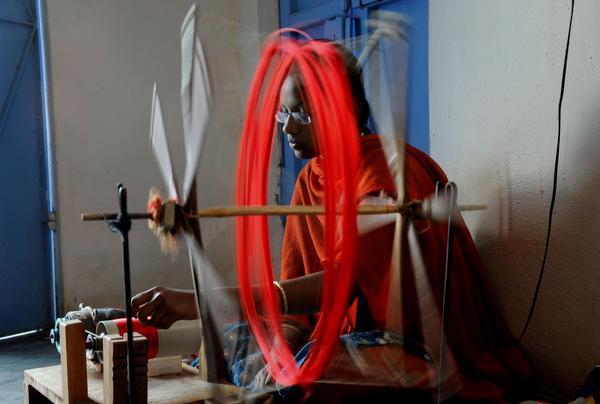Published in The Hindu Business Line on November 21, 2017

Placards announcing job vacancies in garment manufacturing units, which used to be a common sight in Tirupur, is a rarity now. But, a cross-section of garment manufacturers maintain that there is acute shortage of labour.
So why are the signboards missing? A lull in business, it seems.
Around 8,500 units are engaged in the manufacture of textile products and garments in the knitwear cluster, apart from a large number of job-working units, the vast majority of them run by households.
Industry insiders say it is the the job-working units that face the threat of closure as they are unregistered entities. “They have neither an industrial licence nor other qualifications to be registered under the new tax regime as they are in the unorganised sector,” an exporter said.
While some worker-turned-entrepreneurs quietly join some unit or another to eke out a living in the last two months or so, a few others are in the wait-and-watch mode, hoping that things will return to normal soon.
There is a sense of gloom that has gripped the knitwear export cluster. There was an unprecedented drop in export value in October.
Fear of closure
“The garment sector has reached the endurance limit. Any delay in government intervention in handholding the sector by way of reinstating the old duty drawback structure and restoring the remission of State levies under RoSL (Rebate of State Levies) would drive us out of business. Buyers are threatening to move. And we are in an awkward situation as are unable to arrive at a price after GST implementation,” said Raja M Shanmugham, President, Tirupur Exporters’ Association.
“There is total chaos today. We do not have a level-playing field to sustain in the global market as we are compelled to compete with ‘tariff advantaged’ nations such as Bangladesh, Vietnam, Cambodia and Sri Lanka. The existing duty structure has put us in a disadvantageous position,” he added.
Sliding exports
Data reveal that readymade garment exports from the country has begun to slide, registering a negative growth from June 2017 compared to the year-ago period. It peaked at a negative growth of 41 per cent in rupee terms in October, registering a turnover of ₹5,398 crore as against ₹9,110.75 crore in October 2016.
Exporters are worried about their survival, but feel that this situation can be avoided if the government extends a lifeline support as in the past.
Growth in domestic market
While there is gloom on the export front, the domestic market is showing signs of a pick-up.
“When the industry here faced a pollution problem in 2011-12, the export of readymade garments stood at around ₹10,500 crore and the domestic turnover, at ₹3,500 crore. Over the last five years (2012- 2017), the domestic market has grown five-fold to touch ₹18,000 crore, but RMG exports registered only a two-fold increase — from ₹10,500 crore to ₹26,000 crore,” TEA President said.
Business at the Khaderpet market in Tirupur looked dull. This market houses around 2,500 textile shops and all of them cater to the domestic requirements.
Shopkeepers said that at least 50 per cent of the dealers, who would hitherto source goods from the market, abstained from buying, citing GST.
Sathik Basha, Manager, Al-Malik Garments said the garment manufacturing company had stopped production for 2 months after GST roll out. “We are now inching back. Diwali sales this year was pathetic and is happening for the second year in a row. We were stuck due to demonetisation during the last season and GST now,” he said.
Fall in sales
Most shops in the market have halved their workforce. Market sources said there was a deep dip in sales from around ₹1 lakh a week in April-May to ₹20,000 to ₹25,000 a week now.
Industry sources say that a good number of migrant workers from the North-East have started to head back as many units have cut down production.
 CPD RMG Study Stitching a better future for Bangladesh
CPD RMG Study Stitching a better future for Bangladesh



